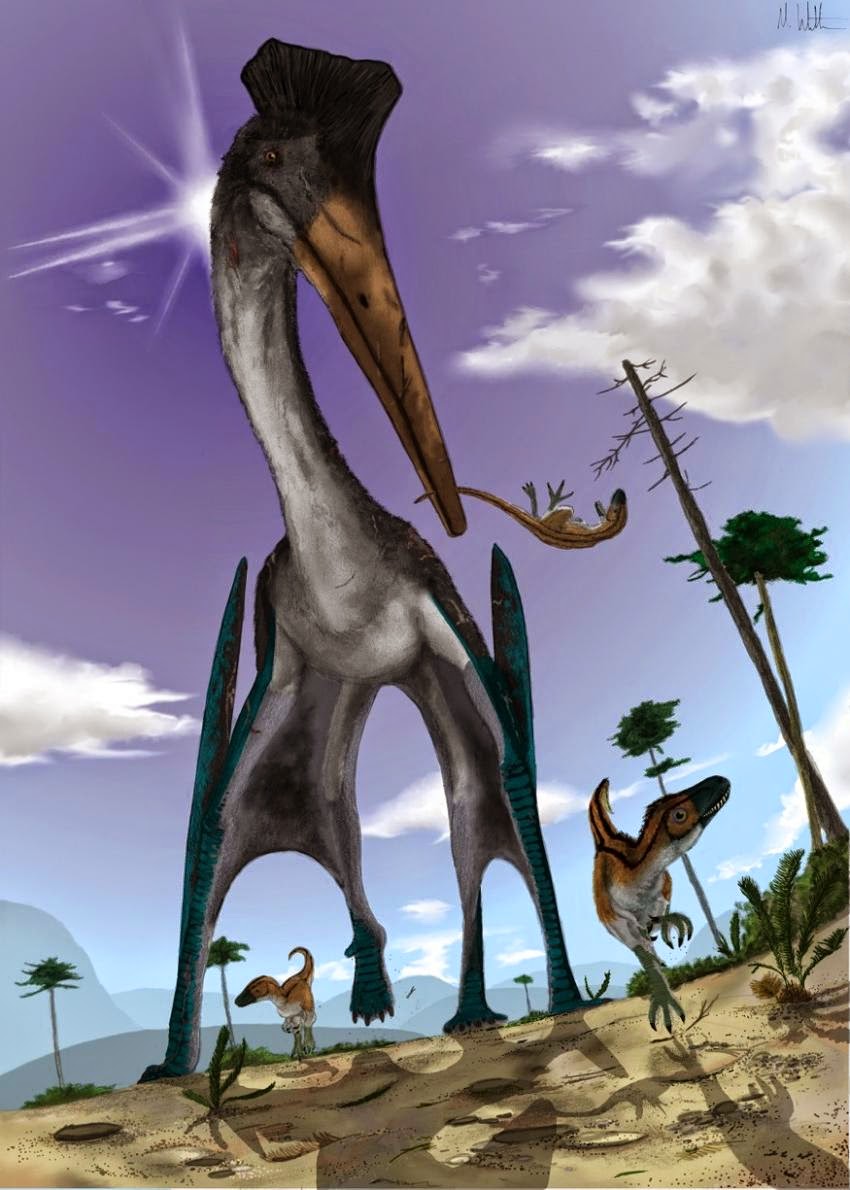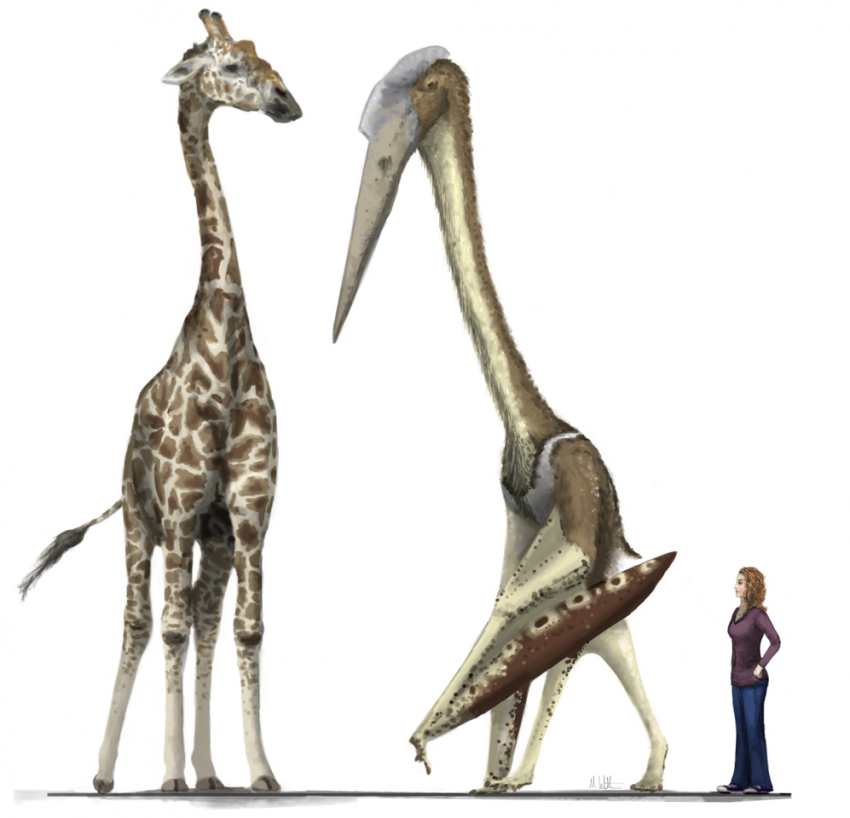
A new study, which teamed cutting-edge engineering techniques with paleontology, has found that take-off capacity may have determined body size limits in extinct flying reptiles. The research simulated pterodactyl flight using computer modeling, and will be presented at the upcoming Society of Vertebrate Paleontology meeting in Berlin. Findings suggest that a pterodactyl with a wingspan of 12m or more would simply not be able to get off the ground.
Pterosaurs (commonly known as pterodactyls) were truly giants of the sky. With wingspans of up to 10m, the largest species may have weighed as much as a quarter of a ton. They would have dwarfed the largest known bird at just one third this size. How could such behemoths stay aloft? What prevented them from becoming even bigger?
These questions sparked a novel partnership between Colin Palmer: entrepreneur, mechanical engineer and now doctoral student at Bristol University (UK); and Mike Habib: anatomist and paleontologist at University of Southern California.
“It has been fascinating to apply an engineering approach to understanding biological systems” says Palmer, who has worked on yachts, hovercraft, sailing vessels and windmills before turning to pterosaurs. “Working with Colin has been particularly rewarding” says paleontologist Habib “as we have complimentary skill sets and come at the problem from different backgrounds.”
The pair used 3D imaging of fossils to create a computer model of a pterosaur with a 6m wingspan. This model was then scaled up to create enlarged models with 9m and 12m wingspans. They were used to estimate the wing strength, flexibility, flying speed and power required for flight in massive pterosaurs.

Results showed that even the largest pterosaur model could sustain flight by using intermittent powered flight to find air currents for gliding. It could also slow down sufficiently to make a safe landing because the pterosaurs wing is formed from a flexible membrane.Take-off, on the other hand, proved an entirely greater challenge. Unlike modern birds, pterosaur anatomy suggests that they used both their arms and legs to push themselves off the ground during take-off, a maneuver known as the ‘quadrupedal launch’. However, once wingspans approached 12m, the push-off force required to get the model off the ground was too great.
The challenge of propelling a 400kg animal using a quadrupedal launch kept the 12m-wingspan model strictly on terra firma. Palmer concludes “Getting into the air ultimately limited pterosaur size. Even with their unique four legged launch technique, the iron laws of physics eventually caught up with these all time giants of the cretaceous skies.”
Note : The above story is based on materials provided by Society of Vertebrate Paleontology










